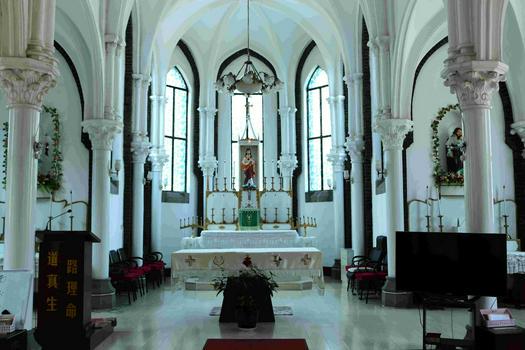One Wednesday in the autumn, I went for a walk in the ancient city Liaoyang, Liaoning Province. I saw a cross on top of a church building in the distance, and then I went into it.
Located at No. 18, West Sidao Street, the Catholic church is known to locals as “Sidao Street Catholic Church”. It also has an unofficial name - Liaoyang Jesus Sacred Heart Catholic Church.
According to A Survey of Religion in Liaoyang compiled by Ethnic and Religious Affairs Commission of Liaoyang City, Catholicism was introduced by French priests into the city in 1853. Liaoyang Catholic Church was subordinate to the Roman Catholic Archdiocese of Shenyang in 1924. The statistics in 1943 showed that there were 3,845 local Catholics, which was at its peak. However, the current number of followers is much fewer than before.
The current church building was reconstructed in 1903, the time after the original church was burned down during the Boxer Rebellion. In October 2014, the rebuilt building was listed as the ninth cultural relics protection site of the province, where lies the center of Catholicism in the city.
Covering an area of 7,100 square meters with a floorage of 4,210 square meters, the Gothic-style church is a combination of Chinese and western elements. The adjacent three-story bell tower was rebuilt in 1993, with a height of 33 meters.
The cyan stone bricks, sharp-angled archway, ribbed dome, and flying buttress form a complete architectural system. A stone plaque is hung on the south top, with three Chinese characters saying “Catholic Church” engraved on it. The main hall has a brick-wood structure with a floor construction of 480 square meters. There are eleven white pillars in two rows, dividing the space into three galleries. The painting of the Sacred Heart of Jesus is placed on the central altar in the north, while there are icons in two side altars in the east and in the west.
A two-story clergy house sits outside the church. A stone carving of the Bible is located on the other side. “Our Lady of Lourdes Grotto” presents a colorful statue of the Holy Mother.
(The article is originally published by Gospel Times.)
- Translated by Karen Luo












